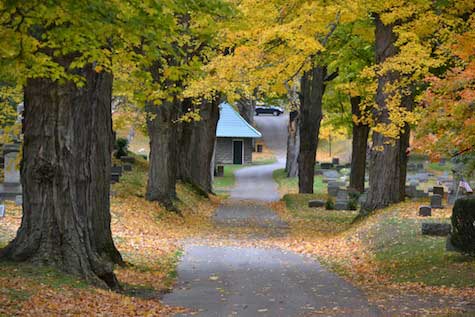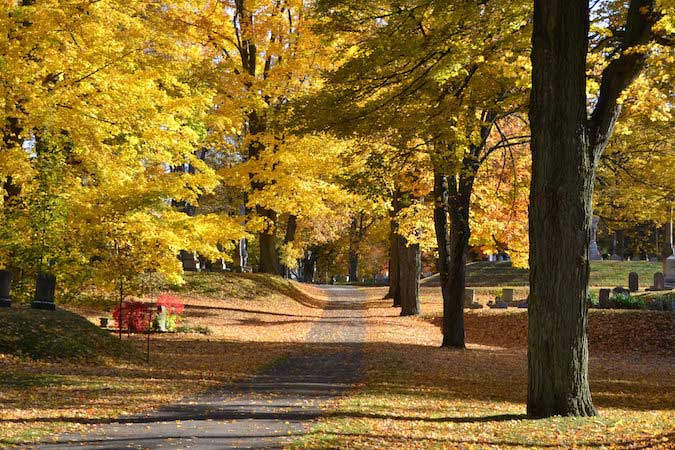Firm tells Albion it has far too many maples, putting urban forest at risk
Tree experts value Albion’s municipal forest at $7.9 million
ALBION – A tree firm hired to do an inventory of the village’s urban forest estimates the 2,070 trees on public land in Albion at $7.9 million.
“This is infrastructure that gives back to you,” said Lori Brockelbank, a certified arborist and project manager with the Davey Resource Group.
However, she said 57 percent of the trees are maples, and that makes the forestry vulnerable if an invasive bug or disease were to spread among those trees. Brockelbank addressed the Village Board during a recent meeting, and presented a final tree management plan and inventory. Ideally, the village would have less than 30 percent of a variety.
Davey Resource Group was paid $41,450 for the project. The village received a $38,260 state grant for the tree inventory and management plan.
Davey identified 719 planting sites for new trees in the village. The firm recommended varieties for the locations. Brockelbank urged Albion to avoid more maples.
Davey rated the health of trees and assigned a risk – low, moderate, high or extreme. The firm identified 204 trees that are in poor health and should be removed or have dead spots pruned. Taking down 105 trees identified for removal would cost an estimated $42,000, Brockelbank said.

The streets at the cemetery are lined with towering maple trees.
She urged the village to keep the trees healthy and plant more. The trees consume storm water, which reduces that demands on the village’s sewer plant, and slow down erosion, preserving soil, among their many benefits, she said.
Davey is suggesting the village commit to planting at least 42 new trees a year, and remove at least 21.
The village should also be structurally pruning at least 76 of its younger trees annually, and 279 other trees should be cleaned each year as part of a routine pruning cycle.
Davey looked at 2,794 sites where there could be trees – with 2,070 trees, 5 stumps and 719 planting sites. These locations were at the public right-of-way on village streets and at parks and public facilities, including Mount Albion Cemetery, Bullard Park, Lafayette H. Beach Park, St. Joe’s Park, Veterans Memorial Park, the former County Fairgrounds on Washington Street, and Carosol Park.
Some highlights from the report:
• The overall condition of the village’s urban forest is rated as fair.
• The tree inventory is skewed with a greater number of mature trees compared to younger ones.
• Approximately 41 percent of the inventoried trees have dead or dying parts.
• Overhead utilities interfere with street trees among 32 percent of the population.
• Granulate ambrosia beetle, Xm ambrosia beetle and Asian longhorned beetle pose the biggest threats to the health of the trees in Albion.
• The Albion trees provide approximately $13,310 in the following annual benefits: Air quality – 1,100 pounds of pollutants removed valued at $4,241; Net total carbon sequestered and avoided – 27.60 tons valued at $4,707; Stormwater peak flow reductions – 488,071.3 gallons valued at $4,361 for the year.
• New trees should be planted in areas that promote economic growth, such as business districts, recreational areas, trails, parking lots, areas near buildings with insufficient shade and areas where there are gaps in the existing canopy.
• Estimated cost is first year of implementing tree planting. High priority pruning and management plan is $141,320 for the first year with cost dropping to $124,057 in second year, $87,549 in the third year, $79,675 in fourth year and $79,145 in fifth year.
• Davey is providing village with TreeKeeper software to help manage the urban forest, tracking conditions of trees.
• Albion’s ratio of street trees per capita is 0.13, which falls significantly below the mean ratio of 0.37 reported for 22 U.S. cities. According to the Albion study, there is one tree for every 7.8 residents. Albion’s potential is one tree for every 4.1 residents.
• New plantings should have priority in southwest census block of Albion, where the neighborhoods are near correctional facility, railroad and busy Route 31. Trees would help mitigate the impact from those sites.










































































